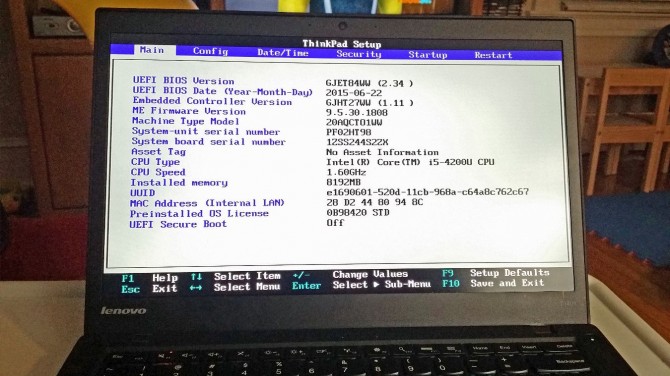- Reset Mac To Factory Setting On OS X EI Capitan, Yosemite
- 19 Useful Mac Startup Keyboard Shortcuts You Should Know
- All The Keyboard Shortcuts You Can Use When Starting Up Your Mac
Mac OS 'sad face' of old. Occasionally, a Mac can become stubbornly uncooperative and refuse to accept inputs. It's time for a reboot. Here are some simple techniques to force a restart your Mac. The boot process on a Mac is a magical process, all you see is a grey screen with the magic happening in the background. Did you know that very are various keys which you can use to change how you Mac boots and access certain settings. They are not for every day use, mostly troubleshooting. They are worth knowing if anything goes wrong. If you’re using a portable Mac with an external keyboard, make sure you press and hold the Option key on the built-in keyboard. Restart using Boot Camp Control Panel: Click in the right side of the taskbar, click the Boot Camp icon, then choose Restart in macOS. How to Boot Mac in Internet Recovery Mode. Along with the introduction of a locally stored recovery.
Trick
Hey
The boot process on a Mac is a magical process, all you see is a grey screen with the magic happening in the background. Did you know that very are various keys which you can use to change how you Mac boots and access certain settings. They are not for every day use, mostly troubleshooting. They are worth knowing if anything goes wrong.
There are a variety of keys which you can use. These have been found by searching the Internet on Apple’s website as well as other peoples sites. I have not tested every single command because I haven’t had time. Although I would take them in good faith.
During boot if you press:
C You start from a bootable CD such as your install DVD in the drive.
D Perform an Apple Hard ware test if you have your install DVD in the drive.

N Boot from a network compatible server. Only useful if you have the server.
T Start up in Target Disk mode. You can usually connect to another Mac through Firewire and do lots of funky things. Gone out of fashion and not used as much.
Option Start up using the Start Up Manager. Here you can pick which drive you want to boot from. Known to people who use BootCamp. You can also boot from a CD which is the same as press C.
Option then N Similar to the item above, except you get given the choice of booting from a network disk.
Reset Mac To Factory Setting On OS X EI Capitan, Yosemite
Option + N Boot from the first network boot image.
Command + V Boot up in Verbose mode, where you see lots of text whizzing by which is not a lot of use to you. I have written about this command here. It will also show Verbose output on shut down.
Command + S Single User Mode. This is where you can run a lot of high level tasks as a single user. Probably not for newbies. You could probably break your computer very quickly in Single User mode. More about it here.
Shift Start up in safe mode. Very useful if you have a problem and need an environment where you don’t want unnecessary things loaded. A good bet if you get Kernel panics during boot.
Option + Command + P + R Reset NVRAM. Although you will probably never need to reset this RAM it contents some useful stuff that can become corrupted. If you are having really bad problems this may be a good lead to follow. More information on Apple’s website.
Hold Eject or F12 or Mouse Eject anything that is in the disk drive. One to follow on from yesterdays topic.
I think that is just about it. I couldn’t find any more that worked with Mac OS X. If you have any more please leave a comment below. Its useful to have a list in case you ever need to use them.
Related posts:
Where To Next?
19 Useful Mac Startup Keyboard Shortcuts You Should Know
How to start up in macOS from Windows
All The Keyboard Shortcuts You Can Use When Starting Up Your Mac

- From the notification area on the right side of the Windows taskbar, click to show hidden icons.
- Click the Boot Camp icon .
- From the menu shown, choose Restart in macOS.
If you haven't installed the latest Boot Camp updates, you might get the message ”Could not locate the OS X boot volume.'

Or use Startup Manager as your Mac starts up:
- Restart your Mac from the Start menu in Windows.
- Press and hold the Option (or Alt) ⌥ key as your Mac begins to restart.
- Select your Mac startup volume (Macintosh HD) in the Startup Manager window, then press Return or click the up arrow:
How to start up in Windows from macOS
- Use Startup Manager to choose your Windows (Boot Camp) volume during startup.
- Or select your Boot Camp volume in Startup Disk preferences, then restart.
Learn more

- If you're having difficulty using VoiceOver or another screen reader to complete these steps, please contact Apple Support.
- Learn how to install Windows 10 on your Mac.
